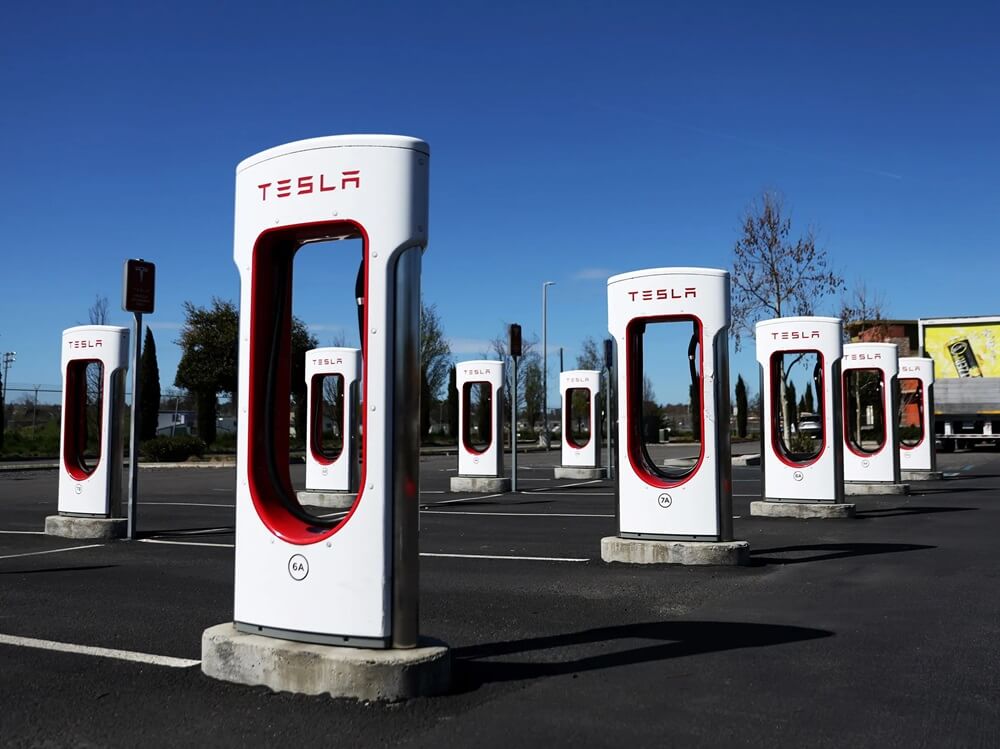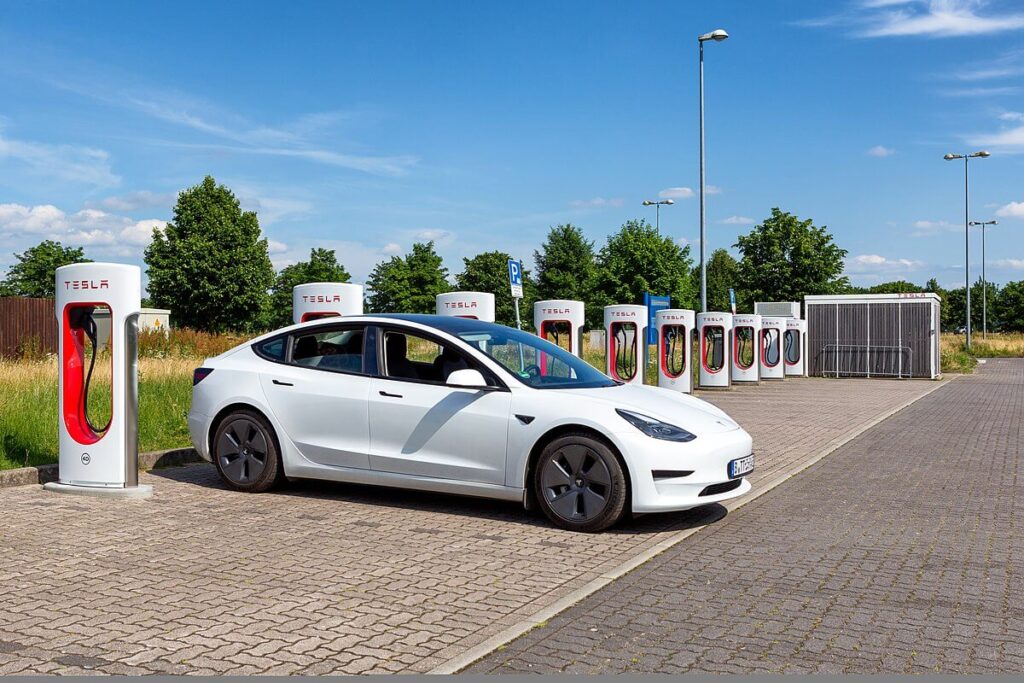As electric cars become more and more common, Tesla owners’ driving proficiencies have become more and more reliant on the Supercharger network. Long-distance travel is made conceivable by the ease of these high-power charging stations. However, due to frequent use, some have raised concerns about whether supercharging is harmful to Tesla batteries. In this article, we will tell you whether supercharging is harmful or not.

What is Supercharging?
Tesla Fast Charging has a strong 480V DC rapid charging mechanism. When the network was originally launched in 2012, there were just 6 chargers available. With a supercharger, you can finish up to 200 miles of car charging in around 15 minutes. With the Supercharger Network spread out across the United States, you can travel to any destination and the cost of petrol is eliminated.
Does the Supercharger Damage Battery?
Tesla promises superior performance and very little degradation due to its inbuilt Active Thermal Management technology. Overcharging your Tesla could lead to minor damage to the battery. The main reason is due to heat produced during rapid charging sessions.
During charging and driving, this system actively monitors and controls the battery pack’s temperature. To make sure the battery runs within the ideal temperature range, it uses liquid cooling and heating systems. Furthermore, it maintains a constant temperature profile and effectively dissipates heat by intelligently controlling the coolant flow throughout the battery pack.
Similar Posts:
- Tesla Premium connectivity not working
- How much is a Tesla bumper?
- Can you visit the Tesla factory?
- Tesla Model 3 frunk won’t open
Is It OK to Supercharge Tesla All The Time?
Many people ask can I supercharge my Tesla every day? Using home charging sources is better for short trips and everyday commuting, but supercharging is not suggested as the primary charging method since it may cause minimal battery damage over time.
Therefore, using Superchargers alone to meet all of your everyday needs is not the most operative way to charge. While there are no hard restrictions on how often you may use Tesla Superchargers, misusing them could accelerate the deterioration of your batteries. To get the most out of your batteries, you can combine home and trip charging possibilities with Superchargers.

Supercharging once a week will not significantly reduce the battery life, but it will strain it more than slower charging methods. Using Superchargers carefully is advised by Tesla. It suggests instead not to let the battery fall below 10% or to charge it to full capacity regularly. A combination of slower charging methods and occasional Supercharger use is recommended for better outcomes and prolonged battery life.
Charge Speed and Rate
Tesla superchargers are made to charge cars rapidly, so owners of Tesla vehicles can travel more distance in a shorter charging time. With a range of up to 200 miles in just 15 minutes. The charging speed is influenced by factors such as the car’s battery capacity and its current state of charge.
Supercharger Network
The extensive network of fast-charging stations known as the Tesla Supercharger Network was created especially for Tesla electric cars (EVs), including the Tesla Model S, 3, X, and Y. When charging at home is not possible. Tesla Superchargers provide a convenient way for Tesla owners to rapidly recharge their vehicles during extended journeys.
Versions and Levels
Urban Superchargers are available in many varieties, the most popular being V1, V2, and V3. The 90 kW of power produced by the V1 Superchargers was upgraded to a maximum of 150 kW by the V2 Superchargers. The up-to-date V3 Superchargers provide significantly faster charging times with up to 250 kW of charging power.
Locations and Amenities
One of the biggest charging networks in the EV business is Tesla’s Supercharging Network, which covers all of North America. To allow drivers to develop nearby amenities like restaurants, retail stores, and hotels while their cars are recharging, charging stations are positioned in strategic locations. Additionally, drivers can locate the closest Supercharger stations and plan ideal routes with the help of Tesla’s trip planner, which is available within the Tesla app.
Let us know in the comments if you have any other questions or queries.


![Is Supercharging Bad For Tesla Battery? [ANSWERED] Is Supercharging Bad For Tesla Battery?](https://carstale.com/wp-content/uploads/supercharging-bad-for-tesla-1024x471.jpg)